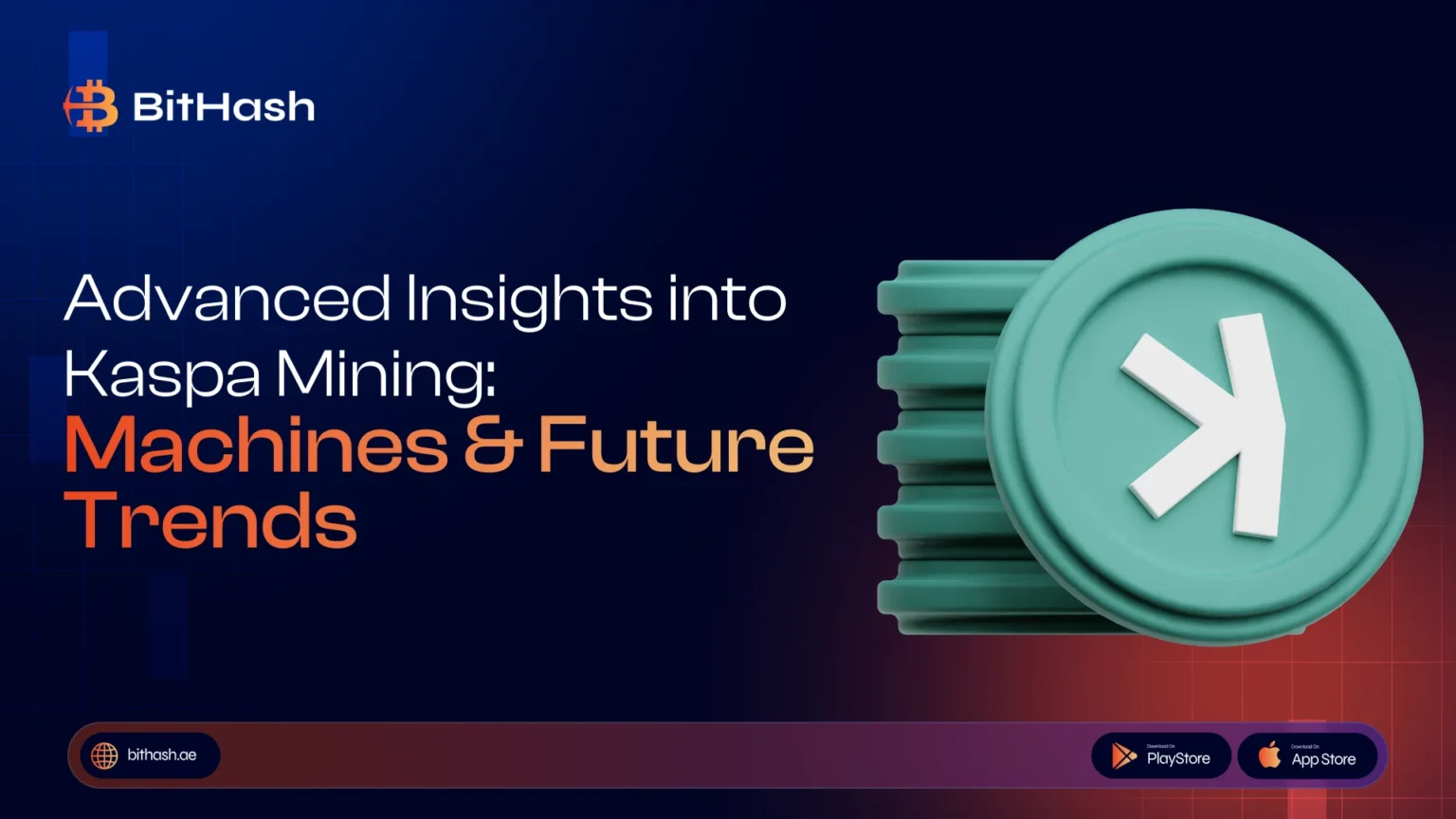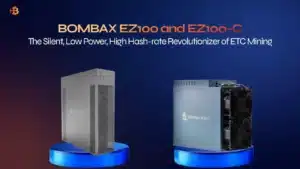Kaspa (KAS) is rapidly emerging as a standout in the cryptocurrency space, thanks to its innovative blockDAG architecture and lightning-fast transaction speeds. Unlike traditional blockchains, Kaspa’s unique design allows multiple blocks to coexist, enabling unparalleled scalability and near-instant confirmations. This makes it not only efficient for transactions but also highly attractive for miners and developers seeking next-generation blockchain solutions.
As the Kaspa network continues to expand, interest in mining has surged, especially among those seeking high-performance, energy-efficient setups that deliver consistent returns. With the rise of specialized ASIC machines and growing institutional attention, Kaspa mining is evolving into a competitive and technologically advanced sector.
In this guide, we’ll explore the latest Kaspa mining machines, key profitability factors, and future trends shaping the ecosystem in 2025 and beyond. Whether you’re a seasoned miner or just entering the space, this deep dive will help you stay ahead of the curve.
What Is Kaspa (KAS)?
Kaspa (KAS) is a next-generation proof-of-work (PoW) cryptocurrency that stands out for its groundbreaking implementation of the GhostDAG protocol. Unlike traditional blockchains that rely on linear confirmation, GhostDAG allows multiple blocks to coexist and be ordered in a directed acyclic graph (DAG). This innovation enables Kaspa to achieve block-per-second speeds, making it one of the fastest and most scalable PoW networks.
The protocol’s ability to process parallel blocks without compromising security or decentralization solves a significant bottleneck in blockchain scalability. As a result, Kaspa offers near-instant transaction confirmations, low latency, and high throughput, features that are critical for real-world applications and enterprise adoption.
Kaspa’s architecture also upholds the core principles of decentralization and security through a robust PoW consensus mechanism. This makes it highly attractive to miners, who benefit from consistent block rewards and a fair mining environment. Developers are drawn to Kaspa for its open-source nature, active community, and potential to build scalable decentralized applications (dApps).
With its unique blend of speed, security, and scalability, Kaspa is rapidly gaining traction as a viable alternative to legacy blockchains such as Bitcoin and Ethereum, especially in sectors that demand high-performance infrastructure.
Top Kaspa Mining Machines in 2025
Kaspa mining has evolved with the rise of specialized ASIC miners designed for the KHeavyHash algorithm. Here are the leading models:
| Miner Model | Hashrate | Power Consumption | Efficiency | Launch Year |
| IceRiver KS0 Ultra | 200 GH/s | 100W | 2 GH/W | 2024 |
| IceRiver KS5L | 12 TH/s | 3400W | 3.5 GH/W | 2025 |
| IceRiver KS5M | 15 TH/s | 3500W | 4.3 GH/W | 2025 |
| Antminer KS5 | 10 TH/s | 3000W | 3.3 GH/W | 2025 |
| Antminer KS5 PRO | 16 TH/s | 3600W | 4.4 GH/W | 2025 |
These machines offer high efficiency and profitability, especially when paired with low-cost electricity and optimized mining setups.
Kaspa Mining Profitability in 2025
Kaspa mining in 2025 presents both opportunities and challenges, as the network matures and competition intensifies. Profitability is no longer just about plugging in a machine—it’s a strategic endeavor influenced by multiple dynamic factors.
Key Factors Affecting Profitability
- KAS Price Trends: With Kaspa’s market capitalization approaching $2 billion, even modest price increases can significantly enhance mining returns. As adoption grows and trading volume rises, the potential for price appreciation makes Kaspa an attractive asset for miners seeking long-term gains.
- Network Difficulty: The Kaspa network has seen a steady increase in hashrate, which directly impacts mining difficulty. As more miners join the ecosystem, block rewards become harder to earn, making high-efficiency ASICs essential for staying competitive.
- Electricity Costs: Energy consumption remains a critical factor. Miners operating in regions with low electricity rates, such as parts of Asia, Eastern Europe, or renewable-powered zones, can maintain profitability even during market downturns.
- Machine ROI: Advanced ASIC models like the IceRiver KS5 PRO and Antminer KS5 offer superior hashrates and energy efficiency, resulting in faster break-even periods. These machines are designed to maximize output while minimizing operational costs, making them ideal for serious mining operations.
Hobbyists vs. Industrial Miners
While profitability has tightened for small-scale or hobbyist miners due to rising hardware costs and network difficulty, large-scale operations with optimized setups, bulk energy contracts, and advanced cooling systems continue to thrive. Strategic planning, hardware selection, and location are now more critical than ever.
Kaspa’s unique architecture and growing ecosystem ensure that mining remains viable—but only for those who adapt to the evolving landscape.
Future Trends in Kaspa Mining
Kaspa’s future looks increasingly promising as it continues to gain momentum across multiple fronts, from technological innovation to institutional adoption. As the crypto landscape evolves, Kaspa is positioning itself as a high-performance, scalable, and sustainable alternative to traditional proof-of-work networks.
Network Growth
One of the most compelling aspects of Kaspa’s growth is the growing adoption of its GhostDAG protocol, which enables parallel block processing and near-instant transaction confirmations. This unique architecture is attracting developers and users alike, leading to a surge in transaction volume, wallet activity, and community engagement. As more decentralized applications (dApps) and services integrate with Kaspa, its utility and network value are expected to grow exponentially.
Hardware Innovation
The mining hardware ecosystem is also evolving rapidly. By late 2025, we expect to see the release of next-generation ASIC miners optimized for Kaspa’s KHeavyHash algorithm. These machines will offer higher hashrates, improved energy efficiency, and more innovative cooling systems. Some manufacturers are even exploring AI-based optimization, enabling miners to adjust performance based on network conditions and energy costs dynamically.
Institutional Interest
Kaspa is beginning to attract attention from institutional players. Mining pools are expanding their offerings to include Kaspa, with platforms like KuCoin integrating KAS alongside DOGE and LTC. Additionally, discussions around crypto ETFs, including Kaspa, are gaining traction, potentially opening the door to broader financial integration and retail investment.
Sustainability Focus
Environmental sustainability is becoming a priority for Kaspa’s mining community. There’s a growing push toward greener mining practices, including the use of renewable energy sources and carbon offset initiatives. Partnerships with eco-friendly energy providers are in development to reduce the carbon footprint of Kaspa’s mining operations.
Kaspa’s trajectory is defined by innovation, scalability, and a commitment to decentralization. As these trends unfold, Kaspa is poised to become a cornerstone of the next generation of blockchain infrastructure.
Final Thoughts
Kaspa mining is entering a dynamic new phase, driven by technological innovation, rising adoption, and increasing competition. With the introduction of high-performance ASIC machines optimized for the KHeavyHash algorithm, miners now have access to tools that deliver exceptional efficiency and faster ROI. These advancements are reshaping the mining landscape, making Kaspa more accessible to serious operators and institutional players.
The network’s unique GhostDAG architecture continues to attract developers and users, offering scalability, decentralization, and near-instant transaction speeds. As Kaspa’s ecosystem expands, so does its potential for real-world applications and long-term value.
Profitability in 2025 depends on strategic choices, selecting the proper hardware, minimizing energy costs, and staying informed about network trends. While hobbyist mining has become more challenging, large-scale operations with optimized setups remain viable and profitable.
Sustainability is also becoming a priority, with growing interest in renewable energy solutions and eco-friendly mining practices. This aligns Kaspa with the future of responsible blockchain innovation.
In summary, Kaspa offers a compelling opportunity for miners who are ready to adapt, invest wisely, and embrace the evolving crypto landscape. With speed, scalability, and community support, Kaspa is well-positioned to thrive in the years ahead.





